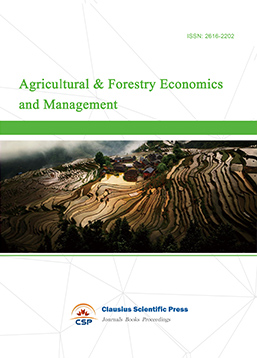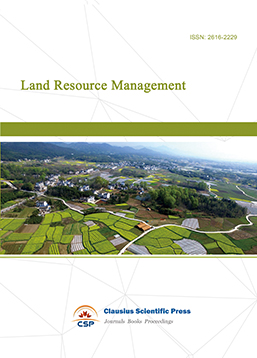Construction of Valuation System with Chinese Characteristics Based on Entropy Weight Method and K-means
DOI: 10.23977/ferm.2023.061119 | Downloads: 48 | Views: 1856
Author(s)
Chengxin Ye 1, Weiming Li 1, Yongxuan Ye 2, Zhaokang He 3, Wanyu Zheng 1
Affiliation(s)
1 Guangzhou Maritime University, Guangzhou, Guangdong, China
2 Guangdong University of Finance, Guangzhou, Guangdong, China
3 Zhuhai College of Science and Technology, Zhuhai, Guangdong, China
Corresponding Author
Weiming LiABSTRACT
"Stock valuation" is one of the main reference factors for investment in the securities stock market. With the continuous development of China's securities market, the traditional "price-earnings ratio valuation model" is no longer adapted to the requirements of China's market, the logic of stock valuation in China's securities market needs to be redefined in order to enable investors to make better decisions. In this regard, Yi Huiman, Chairman of the China Securities Regulatory Commission (CSRC), has put forward the idea of constructing a valuation system with Chinese characteristics, so as to enable real quality stocks, i.e., those with high dividends, low valuation and good growth, to obtain more valuation and win the attention of investors. Therefore, this paper is dedicated to constructing a valuation system with Chinese characteristics and redefining the valuation model to help investors better value stocks in the Chinese stock market. After that, this paper categorizes the valuation stocks with Chinese characteristics in Shanghai and Shenzhen A-shares, and obtains two types of stocks: long-term investment type and short- and medium-term investment type, which help investors in stock investment in Chinese stock market.
KEYWORDS
Valuation System with Chinese Characteristics, Entropy-based TOPSIS Method, K-Means Cluster Analysis, Investment StrategyCITE THIS PAPER
Chengxin Ye, Weiming Li, Yongxuan Ye, Zhaokang He, Wanyu Zheng, Construction of Valuation System with Chinese Characteristics Based on Entropy Weight Method and K-means. Financial Engineering and Risk Management (2023) Vol. 6: 132-139. DOI: http://dx.doi.org/10.23977/ferm.2023.061119.
REFERENCES
[1] Zan Xiuli. Yi Huiman: Strengthening the intrinsic foundation of valuation system with Chinese characteristics. China Securities Journal, 2023-06-09(A03).DOI:10.28162/n.cnki.nczjb.2023.003367
[2] Song Ge; Zhang Hong. Valuation theory system with Chinese characteristics is an incremental contribution to the existing valuation system. Daily Economic News, 2023-05-23(002).DOI:10.28571/n.cnki.nmrjj.2023.001919
[3] Zan Xiuli. Exploring the establishment of a valuation system with Chinese characteristics. China Securities Journal, 2023-05-22(A01). DOI:10.28162/n.cnki.nczjb.2023.002441
[4] Olabhele M E, Jieyun W. Author Correction: Grey hybrid normalization with period based entropy weighting and relational analysis for cities rankings. Scientific Reports, 2023, 13(1):16236-16236.
[5] Zeng W, Fan J, Ren Z, et al. Economic Evaluation Method of Modern Power Transmission System Based on Improved Technique for Order of Preference by Similarity to Ideal Solution (TOPSIS) and Best-Worst Method-Anti-Entropy Weight.Energies, 2023, 16(21)
[6] Yuan J, Yingqing S, Qinkai L, et al.An entropy weight method to integrate big omics and mechanistically evaluate drug-induced liver injury. Hepatology (Baltimore, Md.), 2023
[7] Olabhele M E, Jieyun W. Grey hybrid normalization with period based entropy weighting and relational analysis for cities rankings. Scientific Reports, 2023, 13(1):13797-13797.
[8] Tai Bin; Huang Yangjue; Shen Kaicheng; Lei Xichun; Liao Siyang. Distributed photovoltaic power fluctuation smoothing control method based on index-weighted K-means++ algorithm. Journal of Wuhan University (Engineering Edition), 2023, 56(11):1413-1424.DOI:10.14188/j.1671-8844.2023-11-012
[9] Quankun L, Ruixian M, Mingfu L, et al. A novel fault evaluation method based on nonlinear vibration features and Euclidean distance measurement for grid-like structures. Structural Health Monitoring, 2023, 22(6):4131-4148.
[10] Sarah Z, L. C M, Christopher W, et al. Identifying groups of children's social mobility opportunity for public health applications using k-means clustering. Heliyon, 2023, 9(9):e20250-e20250.
[11] Zeng R. M. Improvement of K-means clustering algorithm and its application research. West China Normal University, 2022.DOI:10.27859/d.cnki.gxhsf.2022.000453
[12] Long W. J.; Zhang X. F.; Zhang C. A business process clustering method based on k-means and elbow rule. Journal of Jianghan University (Natural Science Edition), 2020, 48(01):81-90.DOI: 10.16389/j.cnki. cn42-1737/n. 2020.01.011
[13] Nizam M U, Hassan A D M, Norhakim Y, et al. A spatial-temporal clustering for low ocean renewable energy resources using K-means clustering. Renewable Energy, 2023, 219(P2)
[14] Mengyuan L, Guanwen H, Le W, et al. Comprehensive classification assessment of GNSS observation data quality by fusing k-means and KNN algorithms. GPS Solutions, 2023, 28(1)
[15] Russell G, Ioannis K, Perch J N, et al. On optimal constrained investment strategies for long-term savers in stochastic environments and probability hedging. European Journal of Operational Research, 2023, 307(2):948-962.
[16] Islam T M K, Hooi S T, Lee L C, et al. Investment environment, stock market perception and stock investments after stock market crash. International Journal of Emerging Markets, 2023, 18(10):3506-3527.
| Downloads: | 39832 |
|---|---|
| Visits: | 1094165 |
Sponsors, Associates, and Links
-
Information Systems and Economics

-
Accounting, Auditing and Finance

-
Industrial Engineering and Innovation Management

-
Tourism Management and Technology Economy

-
Journal of Computational and Financial Econometrics

-
Accounting and Corporate Management

-
Social Security and Administration Management

-
Population, Resources & Environmental Economics

-
Statistics & Quantitative Economics

-
Agricultural & Forestry Economics and Management

-
Social Medicine and Health Management

-
Land Resource Management

-
Information, Library and Archival Science

-
Journal of Human Resource Development

-
Manufacturing and Service Operations Management

-
Operational Research and Cybernetics


 Download as PDF
Download as PDF